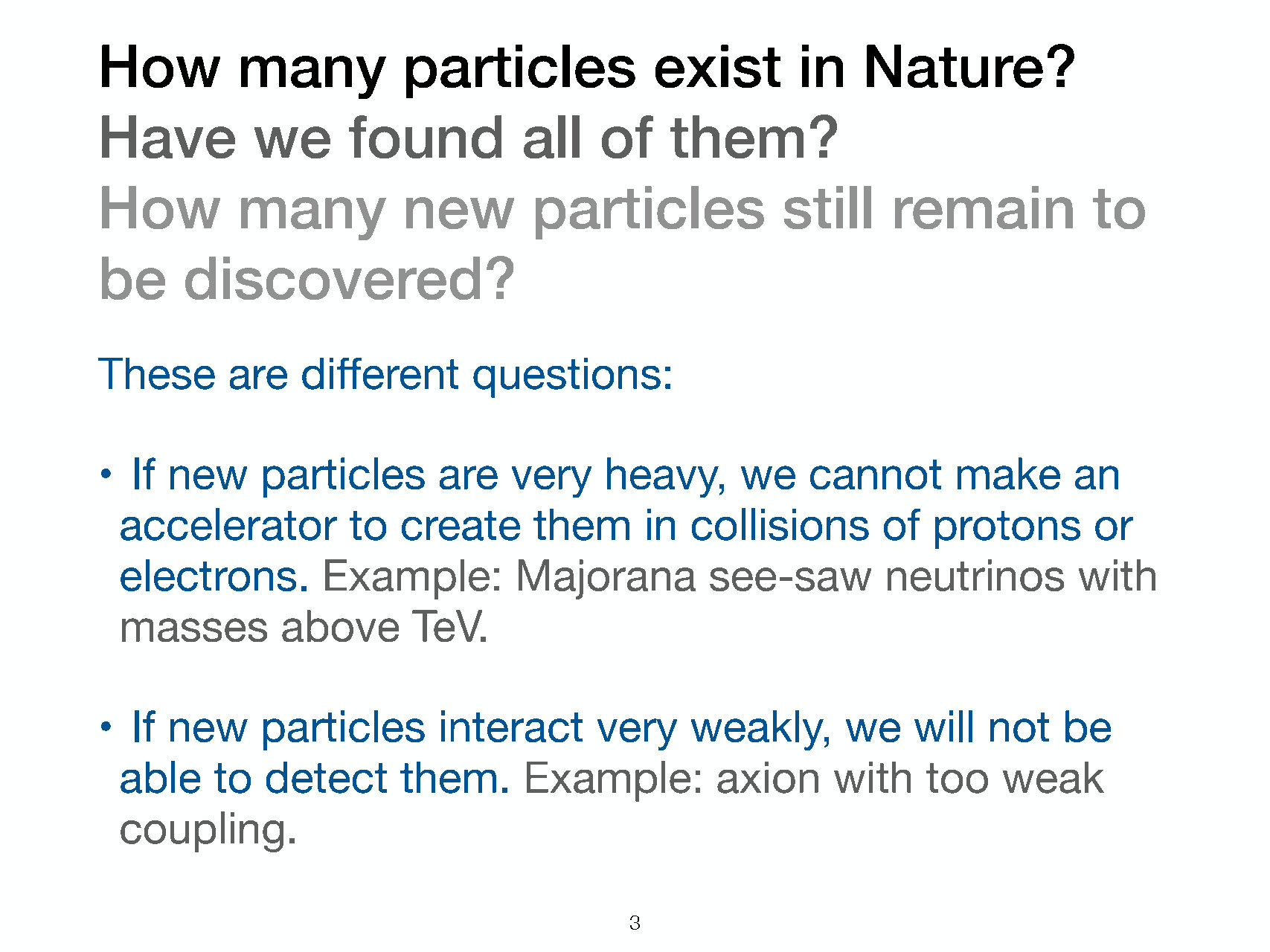The Standard Model of particle physics (SM) and Einstein general relativity are extremely successful in describing almost all phenomena observed in Nature so far, spanning distances from a fraction of Fermi to thousands of megaparsec (Mpc). In this review article, the author deliberates on the question formulated in the title, given that the SM does not allow neutrino oscillations, does not have a candidate for dark matter in the Universe, and does not explain the observed cosmological dominance of matter over antimatter.




The author thanks his collaborators Takehiko Asaka, Fedor Bezrukov, Steve Blanchet, Alexey Boyarsky, Laurent Canetti, Marco Drewes, Shintaro Eijima, Juan Garcia-Bellido, Dmitry Gorbunov, Georgios Karananas, Juraj Klaric, Mikko Laine, Javier Rubio, Oleg Ruchayskiy, Andrey Shkerin, Inar Timiryasov, Sebastian Zell, and Daniel Zenhausern, with whom these ideas were developed over the last 20 years.
1. G. Dvali and G.R. Farrar, Strong CP problem with 1032 Standard Model copies, Phys. Rev. Lett. 101, 011801 (2008).
2. D.I. Mendeleev, Sootnoshenie svoistv s atomnym vesom elementov, Zh. Russ. Khim. Obshch. 1, 60 (1869).
3. T. Kajita, Atmospheric neutrinos, Adv. High Energy Phys. 2012, 504715 (2012).
4. T. Asaka and M. Shaposhnikov, The νMSM, dark matter and baryon asymmetry of the universe, Phys. Lett. B 620, 17 (2005).
5. J. Klarić, M. Shaposhnikov, and I. Timiryasov, Uniting low-scale leptogenesis mechanisms, Phys. Rev. Lett. 127, 111802 (2021).
6. A. Boyarsky, M. Drewes, T. Lasserre et al., Sterile neutrino dark matter, Prog. Part. Nucl. Phys. 104, 1 (2019).
7. E. Bulbul, M. Markevitch, A. Foster et al., Detection of an unidentified emission line in the stacked X-ray spectrum of galaxy clusters, Astrophys. J. 789, 13 (2014).
8. A. Boyarsky, O. Ruchayskiy, D. Iakubovskyi et al., Unidentified line in X-ray spectra of the Andromeda galaxy and Perseus galaxy cluster, Phys. Rev. Lett. 113, 251301 (2014).
9. C. Hagedorn, R.N. Mohapatra, E. Molinaro et al., CP violation in the lepton sector and implications for leptogenesis, Int. J. Mod. Phys. A 33, 1842006 (2018).
10. J. Beacham, C. Burrage, D. Curtin et al., Physics beyond colliders at CERN: beyond the Standard Model working group report, J. Phys. G: Nucl. Part. Phys. 47, 010501 (2020).
11. F. Bezrukov and M. Shaposhnikov, The Standard Model Higgs boson as the inflaton, Phys. Lett. B 659, 703 (2008).
12. A.A. Starobinsky, A new type of isotropic cosmological models without singularity, Phys. Lett. B 91, 99 (1980).
13. V.F. Mukhanov and G.V. Chibisov, Quantum fluctuations and a nonsingular universe, JETP Lett. 33, 549 (1981).
14. P.A.R. Ade, N. Aghanim, C. Armitage-Caplan et al., Planck 2013 results. XXII. Constraints on inflation, Astron. Astrophys. 571, A22 (2014).
15. Y. Akrami, F. Arroja, M. Ashdown et al., Planck 2018 results, Astron. Astrophys. 641, A10 (2020).
16. M. Shaposhnikov, A. Shkerin, I. Timiryasov et al., Higgs inflation in Einstein-Cartan gravity, J. Cosmol. Astropart. Phys. 02, 008 (2021).
17. LiteBIRD Collaboration, E. Allys, K. Arnold et al., Probing cosmic inflation with the LiteBIRD cosmic microwave background polarization survey, Prog. Theor. Exp. Phys. 2023, 042F01 (2023).
18. G.K. Karananas, M. Shaposhnikov, and S. Zell, Scale invariant Einstein-Cartan gravity and flat space conformal symmetry, J. High Energy Phys. 2023, 171 (2023).
19. G.K. Karananas, M. Shaposhnikov, and S. Zell, Weyl-invariant Einstein-Cartan gravity: unifying the strong CP and hierarchy puzzles, arXiv:2406.11956 (2024).
20. J. García-Bellido, J. Rubio, M. Shaposhnikov et al., Higgs-dilaton cosmology: from the early to the late Universe, Phys. Rev. D 84, 123504 (2011).



